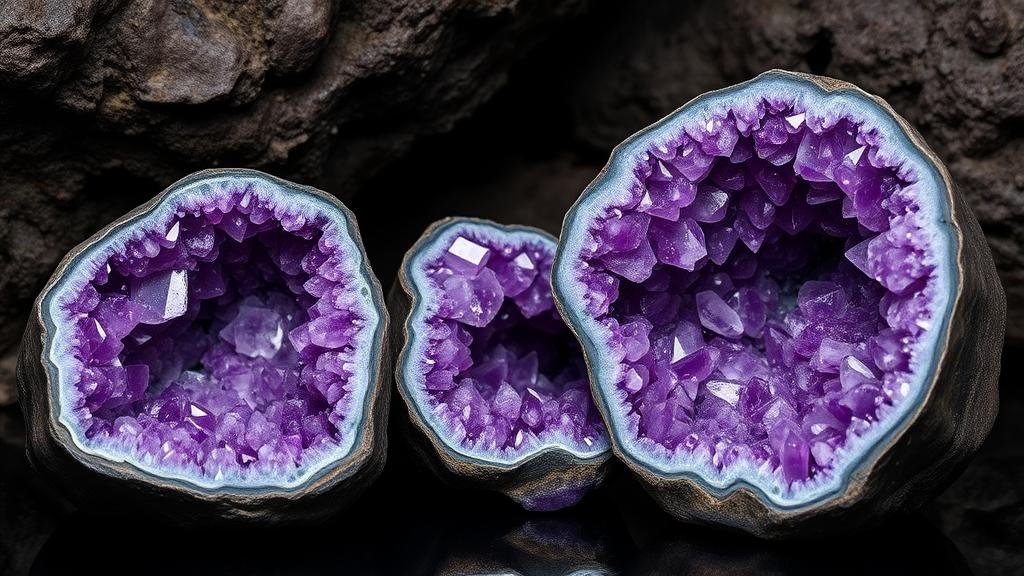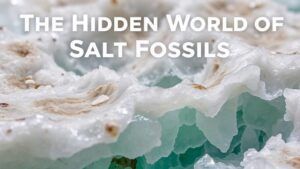Amethyst Geodes: Nature’s Purple Treasure Hidden in Caverns
Amethyst Geodes: Nature’s Purple Treasure Hidden in Caverns
Amethyst geodes are fascinating geological formations that captivate rockhounds and mineral collectors alike. Known for their stunning purple crystals and unique structures, these geodes are not only beautiful but also tell a remarkable story of Earth’s geological processes. In this article, we will explore what amethyst geodes are, how they form, where to find them, and tips for collectors interested in this natural treasure.
What are Amethyst Geodes?
Amethyst geodes are hollow rock formations filled with crystalline material, primarily composed of quartz in its purple variety, amethyst. interior of these geodes is often lined with striking crystals that can range from clear to deep violet hues. The color variations depend on the presence of iron and other trace elements, and the intensity can provide insight into the geodes formation process. Typically, these geodes vary in size, with some being as small as a few inches, while others can grow to several feet in diameter, showcasing stunning crystal clusters.
How Amethyst Geodes Form
The formation of amethyst geodes is a fascinating process that involves several geological stages:
- Initial Cavern Formation: Geodes typically start as gas bubbles in volcanic rock. When lava cools, gas bubbles can form within the molten rock.
- Mineral Deposition: Over time, mineral-rich fluids enter these cavities. As the fluids cool and evaporate, the minerals crystallize, gradually forming the characteristic amethyst crystals.
- Cryogenesis: The color of the crystals is a result of ablative processes, where lower oxidation states of iron create the purple hues, developed during crystallization at varying temperatures.
Scientifically, studies have determined that the ideal temperature for amethyst crystal formation generally lies between 18-25 degrees Celsius (64-77 degrees Fahrenheit), which influences both crystal growth and color development.
Where to Find Amethyst Geodes
Collectors can find amethyst geodes in various locations around the world. Some of the most notable regions include:
- Brazil: Home to some of the largest and most vibrant amethyst geodes.
- Uruguay: Known for its deep purple color and transparent quartz formations.
- Southern United States: States like Arizona and Texas have numerous deposits, offering accessible options for local collectors.
When searching for amethyst geodes, look for sedimentary or volcanic rock formations that may indicate previous geological activity. Abandoned mines or areas with exposed bedrock often yield surprising finds for the enthusiastic rockhound.
Tips for Collectors
Amethyst geodes can be valuable additions to any collection, and here are some practical tips for collectors:
- Purchasing Authentic Geodes: Always buy from reputable dealers or certified gem shows to ensure the quality and authenticity of your amethyst geodes.
- Understanding Grades: Familiarize yourself with the grading systems for amethyst, which often includes considerations for color saturation, clarity, and crystal formation.
- Display and Care: When displaying your geodes, ensure they are placed in a protected area from direct sunlight and extreme humidity to maintain their vibrancy over time.
According to the International Gem Society, meticulously curated amethyst geodes can appreciate significantly in value, depending on rarity and quality. In some cases, these beautiful specimens can sell for thousands of dollars.
Real-World Applications of Amethyst
Beyond their aesthetic appeal, amethyst geodes hold significant value in various domains:
- Interior Design: Many homeowners incorporate amethyst geodes as stunning decorative pieces that add elegance and a touch of nature to their interiors.
- Holistic Practices: Amethyst is often used in crystal healing techniques, believed to promote calmness and clarity of mind.
- Educational Uses: Geologists and educators utilize amethyst geodes to explain geological processes and crystal formation in classrooms.
Conclusion: The Allure of Amethyst Geodes
Amethyst geodes are indeed natures purple treasures, offering collectors not just visual beauty but also a glimpse into Earth’s unique geological history. Whether you’re a seasoned collector or a beginner, understanding their formation, identifying locations for finding them, and knowing how to care for these exquisite specimens will enhance your appreciation of this remarkable mineral. With their beauty and versatility, amethyst geodes remain a cherished item in the world of rockhounding and mineral collecting.



